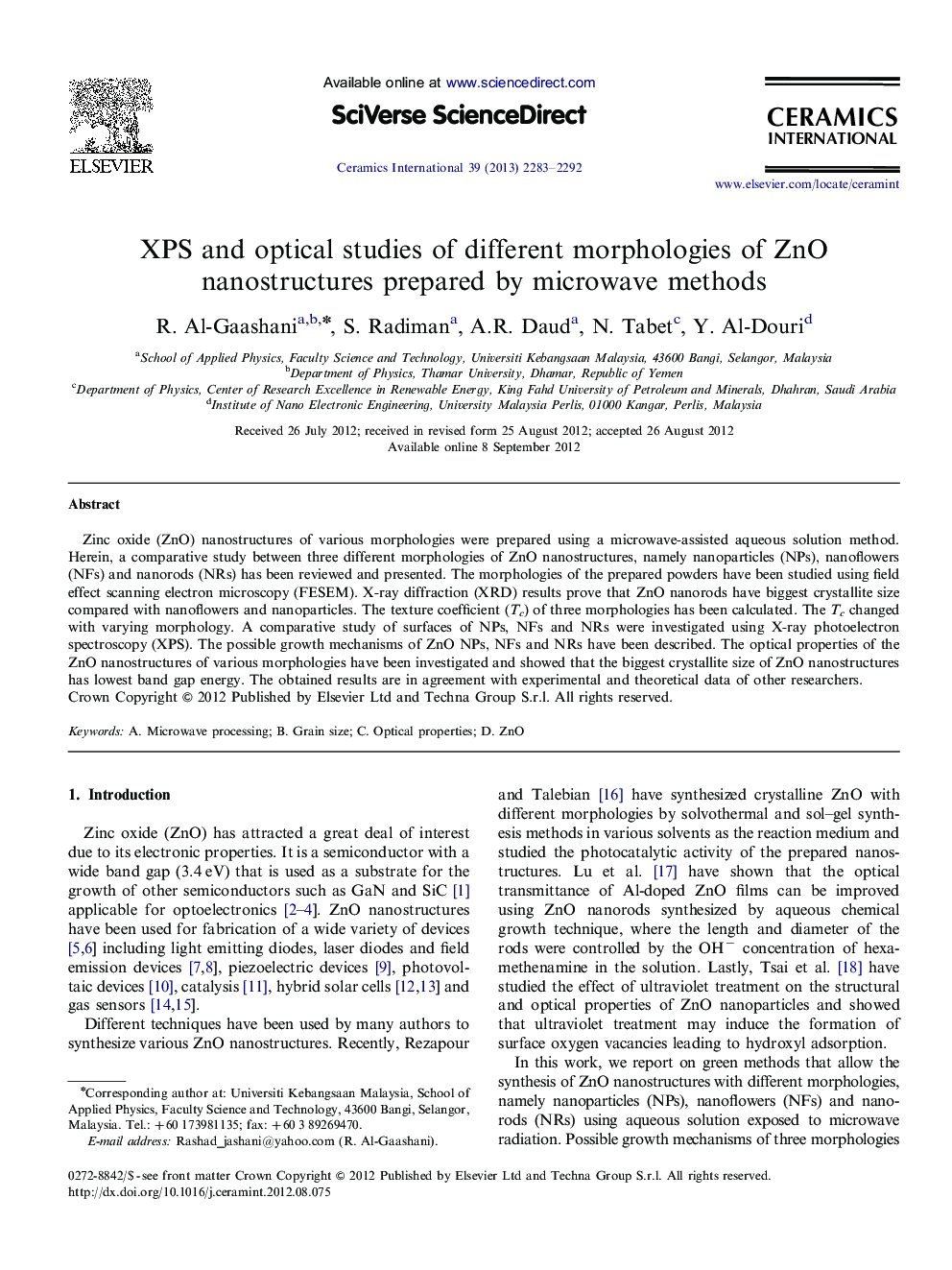| Article ID | Journal | Published Year | Pages | File Type |
|---|---|---|---|---|
| 10626045 | Ceramics International | 2013 | 10 Pages |
Abstract
Zinc oxide (ZnO) nanostructures of various morphologies were prepared using a microwave-assisted aqueous solution method. Herein, a comparative study between three different morphologies of ZnO nanostructures, namely nanoparticles (NPs), nanoflowers (NFs) and nanorods (NRs) has been reviewed and presented. The morphologies of the prepared powders have been studied using field effect scanning electron microscopy (FESEM). X-ray diffraction (XRD) results prove that ZnO nanorods have biggest crystallite size compared with nanoflowers and nanoparticles. The texture coefficient (Tc) of three morphologies has been calculated. The Tc changed with varying morphology. A comparative study of surfaces of NPs, NFs and NRs were investigated using X-ray photoelectron spectroscopy (XPS). The possible growth mechanisms of ZnO NPs, NFs and NRs have been described. The optical properties of the ZnO nanostructures of various morphologies have been investigated and showed that the biggest crystallite size of ZnO nanostructures has lowest band gap energy. The obtained results are in agreement with experimental and theoretical data of other researchers.
Related Topics
Physical Sciences and Engineering
Materials Science
Ceramics and Composites
Authors
R. Al-Gaashani, S. Radiman, A.R. Daud, N. Tabet, Y. Al-Douri,
